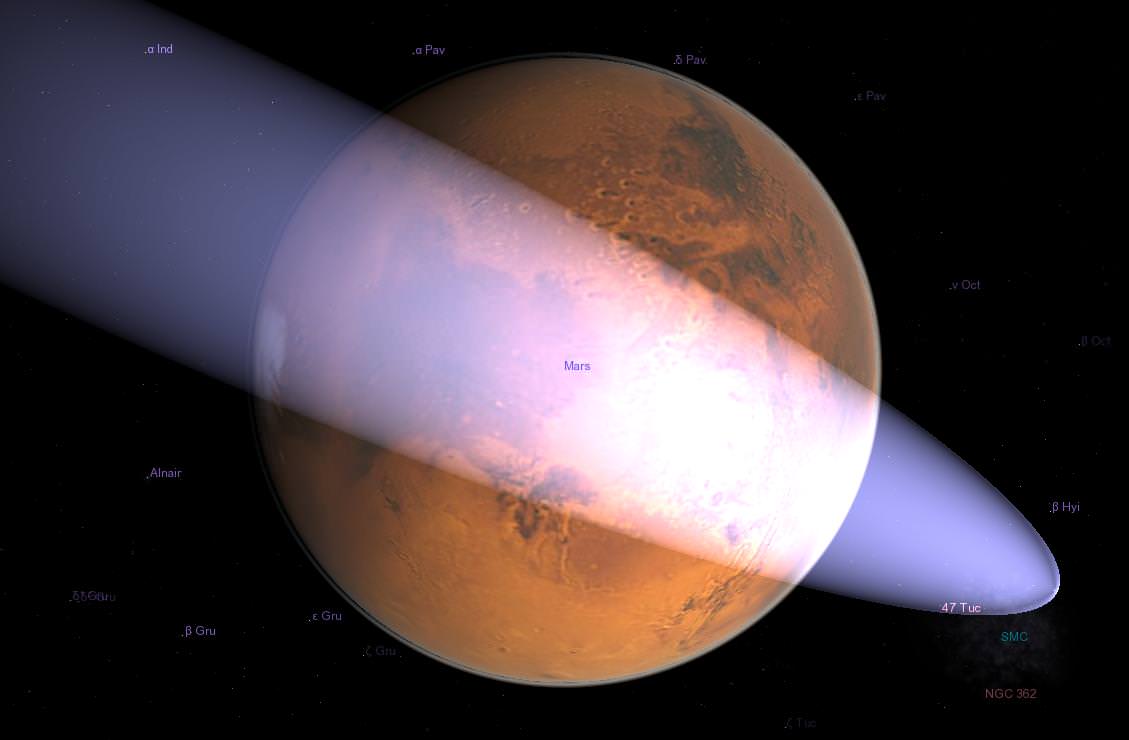There is an outside chance that a newly discovered comet might be on a collision course with Mars. Astronomers are still determining the trajectory of the comet, named C/2013 A1 (Siding Spring), but at the very least, it is going to come fairly close to the Red Planet in October of 2014. "Even if it doesn't impact it will look pretty good from Earth, and spectacular from Mars,"
wrote Australian amateur astronomer Ian Musgrave
, "probably a magnitude -4 comet as seen from Mars's surface."
The comet was discovered in the beginning of 2013 by comet-hunter Robert McNaught at the Siding Spring Observatory in New South Wales, Australia. According to a
discussion on the IceInSpace amateur astronomy forum
when the discovery was initially made, astronomers at the Catalina Sky Survey in Arizona looked back over their observations to find "prerecovery" images of the comet dating back to Dec. 8, 2012. These observations placed the orbital trajectory of comet C/2013 A1 right through Mars orbit on Oct. 19, 2014.
However, now after 74 days of observations,
comet specialist Leonid Elenin
notes that current calculations put the closest approach of the comet at a distance of 109,200 km, or 0.00073 AU from Mars in October 2014. That close pass has many wondering if any of the Mars orbiters might be able to acquire high-resolution images of the comet as it passes by.
But as
Ian O'Neill from Discovery Space
points out, since the comet has only been observed for 74 days (so far), so it's difficult for astronomers to forecast the comet's precise location in 20 months time. "Comet C/2013 A1 may fly past at a very safe distance of 0.008 AU (650,000 miles)," Ian wrote, "but to the other extreme, its orbital pass could put Mars directly in its path. At time of Mars close approach (or impact), the comet will be barreling along at a breakneck speed of 35 miles per second (126,000 miles per hour)."
Elenin said that since C/2013 A1 is a hyperbolic comet and moves in a retrograde orbit, its velocity with respect to the planet will be very high, approximately 56 km/s. "With the current estimate of the absolute magnitude of the nucleus M2 = 10.3, which might indicate the diameter up to 50 km, the energy of impact might reach the equivalent of staggering 2×10¹º megatons!"
An impact of this magnitude would leave a crater 500 km across and 2 km deep, Elenin said.
[caption id="attachment_22635" align="aligncenter" width="580"]
Fragments of Shoemaker-Levy 9 on approach to Jupiter (NASA/HST)[/caption]
While the massive Comet Shoemaker–Levy 9 (15 km in diameter) that crashed into Jupiter in 1994 was spectacular as seen from Earth orbit by the Hubble Space Telescope, an event like C/2013 A1 slamming into Mars would be off the charts.
Astronomers are certainly keeping an eye on this comet, and they will refine their measurements as more data comes in. You can see the orbital parameters available so far at
JPL's Solar System Dynamics website.
We'll keep you posted.
Sources:
Astroblog
,
IceInSpace,
SpaceObs
,
Discovery Space
 Universe Today
Universe Today
